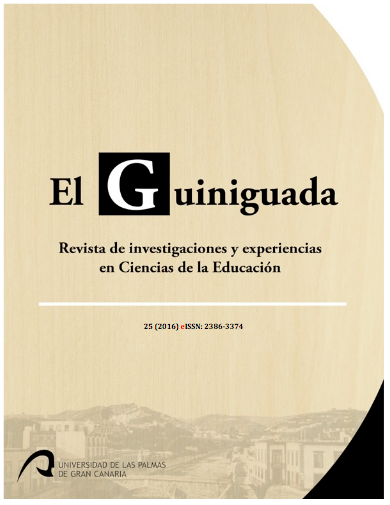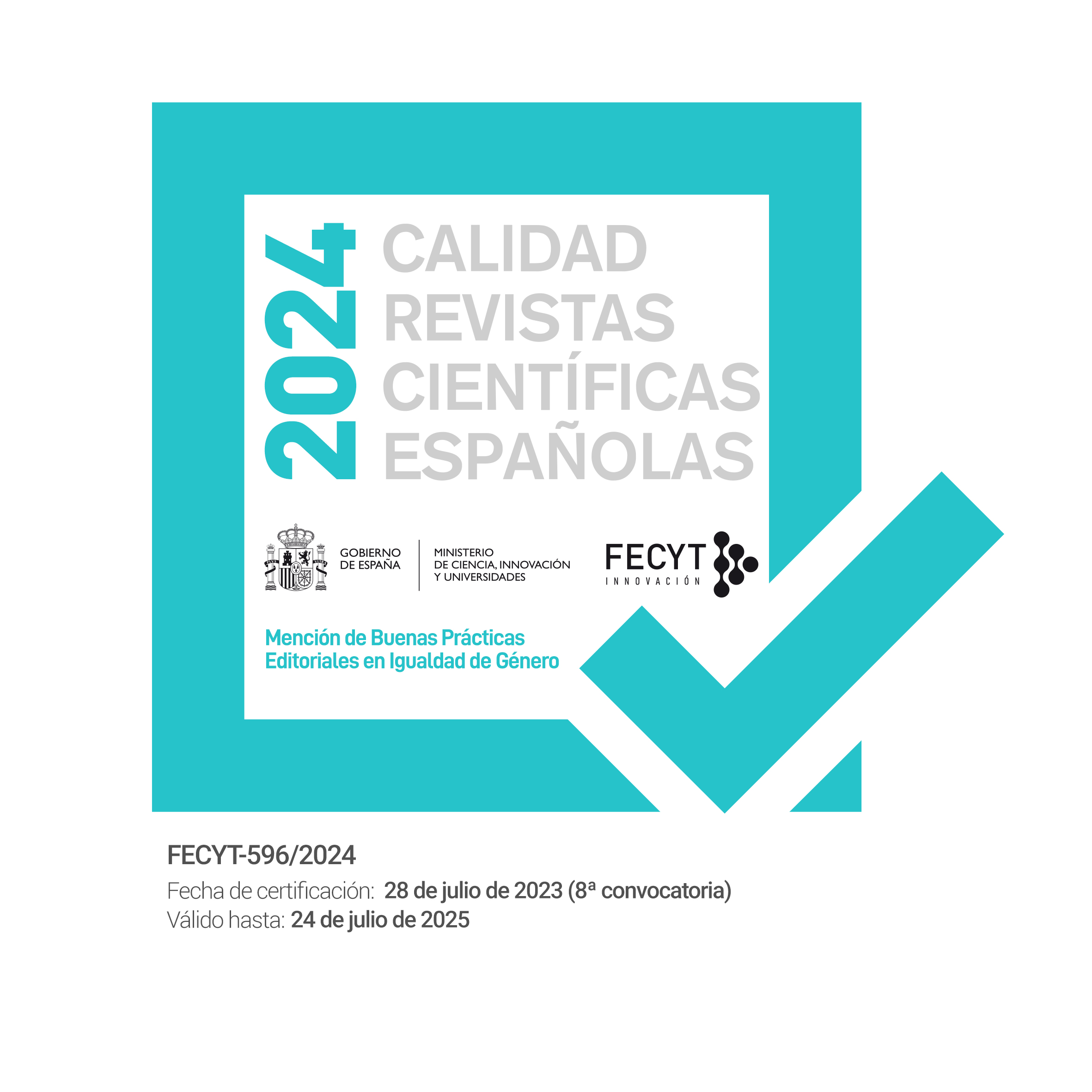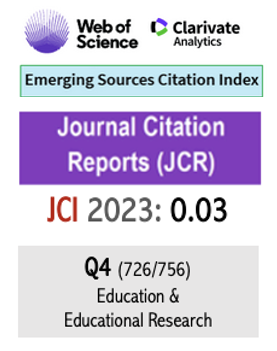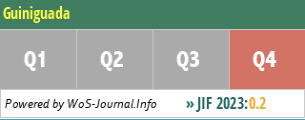¿Cómo ven los maestros en formación la futura evaluación estandarizada a través de tabletas digitales? doi 10.20420/ElGuiniguada.2016.0085
Keywords:
evaluación, tecnología, lenguas extranjerasAbstract
El campo de la evaluación va adquiriendo una importancia progresiva en España. Hasta hace pocos años los estudiosos de la especialidad eran pocos en nuestro país y aun hoy, en el campo de las lenguas extranjeras, el número de investigadores es pequeño. Una de las áreas donde la evaluación de lenguas extranjeras en España se ha fijado recientemente es la de la ubiquidad. Proyectos como PAULEX Universitas y más recientemente OPENPAU han puesto de manifiesto la necesidad del uso de dispositivos móviles para la realización de pruebas estandarizadas. En este caso nos centramos en un estudio de actitudes realizado con 23 alumnos del Grado de Magisterio de Primaria sobre el uso de dispositivos móviles para la evaluación en el aula. Los resultados muestran su gran interés y la aplicabilidad del sistema en las aulas de primaria.
DOI 10.20420/ElGuiniguada.2016.0085
Downloads
References
AMENGUAL PIZARRO, M. (2003). A study of different composition elements that raters respond To/Estudio de las respuestas de los evaluadores a diferentes elementos de las redacciones. Estudios Ingleses De La Universidad Complutense, 11, 53-72.
AMENGUAL-PIZARRO, M. (2009). Does the english test in the spanish university entrance examination influence the teaching of english? English Studies, 90(5), 582-598.
CHALHOUB-DEVILLE, M. (2009). The intersection of test impact, validation, and educational reform policy. Annual Review of Applied Linguistics, 29, 118-131.
DÍEZ-BEDMAR, M. B. (2011). Spanish pre-university students' use of english: CEA results from the university entrance examination. International Journal of English Studies, 11(2), 141-158.
FALSGRAF, C. (2009). The ecology of assessment. Language Teaching, 42(4), 491-503.
FIGUERAS, N. (2007). The CEFR, a lever for the improvement of language professionals in europe. The Modern Language Journal, 91(4), 673.
FIGUERAS, N. (2012). The impact of the CEFR. ELT Journal, 66(4), 477-485.
GARCÍA LABORDA, J. (2010). ¿Necesitan las universidades españolas una prueba de acceso informatizada? El caso de la definición del constructo y la previsión del efecto en la enseñanza para idiomas extranjeros. Revista de orientación y Psicopadagogía, 21(1),71-80.
GARCÍA LABORDA, J., MAGAL ROYO, T., LITZLER, M.F. & GIMÉNEZ LÓPEZ, J.L. (2014). Mobile phones for a University Entrance Examination language test in Spain. Educational Technology & Society, 17(2), 17-30.
HERRERA SOLER, H. (1999). Is the English test in the spanish university entrance examination as discriminating as it should be? Estudios Ingleses de la Universidad Complutense, 7, 89-107.
HERRERA SOLER, H., & MARTÍNEZ ARIAS, R. (2002). A new insight into examinee behaviour in a multiple-choice test: A quantitative approach. Estudios Ingleses de la Universidad Complutense, 10, 113-137.
REMESAL, A. (2007). Educational reform and primary and secondary teachers' conceptions of assessment: The Spanish instance, building upon black and William (2005). Curriculum Journal, 18(1), 27-38.
REMESAL, A. (2011). Primary and secondary teachers' conceptions of assessment: A qualitative study. Teaching and Teacher Education: An International Journal of Research and Studies, 27(2), 472-482.
TAN, C. (2010). Educational policy trajectories in an era of globalization: Singapore and Cambodia. Prospects, 40(4), 465-480.
TROYAN, F. J. (2012). Standards for foreign language learning: Defining the constructs and researching learner outcomes. Foreign Language Annals, 45, S118-S140.
WATERS, A. (2014). Managing innovation in english language education: A research agenda. Language Teaching, 47(1), 92-110.
WRAGA, W. G. (1998). The comprehensive high school and educational reform in the United States: Retrospect and prospect. The High School Journal, 81(3), 121.
ZOHRABI, M., TORABI, M. A., y BAYBOURDIANI, P. (2012). Teacher-centered and/or student-centered learning: English language in Iran. English Language and Literature Studies, 2(3), 18-30.
Published
How to Cite
Issue
Section
License
Authors who publish with this journal agree to the following terms:
- Authors retain copyright and grant the journal right of first publication with the work simultaneously licensed under a Creative Commons Attribution License that allows others to share the work with an acknowledgement of the work's authorship and initial publication in this journal. You can not make a commercial use of the work. The use derived from the work is also not allowed.
- Authors are able to enter into separate, additional contractual arrangements for the non-exclusive distribution of the journal's published version of the work (e.g., post it to an institutional repository or publish it in a book), with an acknowledgement of its initial publication in this journal.
- Authors are permitted and encouraged to post their work online (e.g., in institutional repositories or on their website) prior to and during the submission process, as it can lead to productive exchanges, as well as earlier and greater citation of published work (See The Effect of Open Access).
















